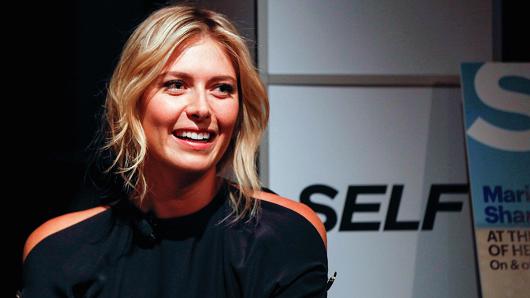Cheating or naivety? Maria Sharapova and the suffocating pressure of elite sports
That familiar putridness has returned for sports fans. A fusion of shock, cynicism and confusion gnaws after Maria Sharapova’s bombshell on Monday night. The five-time tennis Grand Slam champion and the world’s highest-paid female athlete announced that she had tested positive for the recently banned drug meldonium at the Australian Open this January.
Sharapova took an unusual but proactive step of announcing the shock news at a media conference in Los Angeles; a presser where many assumed she’d announce her retirement from the sport due to lingering injuries. Sharapova used the platform to get on the front foot and plead her naivety. She admitted to taking meldonium, a drug which had only been added to the prohibited list last September and came into effect on 1 January, 2016.
The Russian megastar revealed she had used meldonium since 2006 after several health issues arose, including frequent cases of the flu. The drug was originally developed in Latvia for heart patients. It aids blood flow and is not approved for sale in the United States. Meldonium was banned because it helps increase ‘oxygen uptake and endurance’. Several athletes have tested positive but none have been nearly as prominent as Sharapova.
The revelation is likely to leave fans jaded about sports once again. You can believe Sharapova was totally naïve not to have known that the drug was now banned, and it was simply an oversight. Or you can disregard her admission and believe that she purposely wanted to gain an unfair edge by continuing to take the drug knowing it had become prohibited. The world number 7 confessed to “not clicking” on an email link from WADA on 22 December which outlined the new list of prohibited drugs for 2016. She faces up to four years on the sidelines, although 12-24 months is probably the most likely punishment if her actions are deemed unintentional.
Simply put, it’s all a bit muddied and confusing. It doesn’t really matter what we think because we will probably never know the entire truth. Even when the ruling is announced, and whether it is believed that Sharapova was unintentional in her use, the stench of drugs in sports will continue to fester because it is not always just black and white. There is a healthy dose of grey amid this murky issue.
It is increasingly getting difficult in this brutal, and sometimes sinister, business of professional sports in differentiating between cheating and naivety. Cheating in professional sports has long been an epidemic. We’ve been down this road before in basically all sports. It is hard not to raise eyebrows when watching a miraculous physical feat because we have been scarred throughout the years and every scandal intensifies our cynicism detector.
That’s the unfortunate truth. Even tennis hasn’t been immune from innuendo. There have been whispers of performance-enhancing drug use in tennis for years, which reverberate during Grand Slams when marathon matches ensue and athletic deeds seemingly go beyond belief.
But the Sharapova case seems to fall in a different basket; the grey area. Perhaps more information will likely come out, and of course in this era of social media where slander proliferates, Sharapova’s reputation is taking an instant battering.
However, if we accept it was a genuine oversight – and let’s not forget the drug was only banned recently –Sharapova then is in the clear of being a cheat. She certainly didn’t do anything wrong until 1 January, before the drug became prohibited.
However, even before that date, it could be believed that she didn’t just take the drug purely for medicinal purposes but for an advantage, which were allowed under the rules. Here’s the thing: every elite sportsperson is looking for an advantage. The hope, for those who are genuine anyway, is to not stray into dangerous and illegal areas.
And that is something sport has been grappling with. How far can you push the boundary? When is it not clean anymore?
Increasingly, fitness levels need to be absolutely top notch. Due to the increased knowledge of sports science, specifically what the human body can or cannot endure, there has been a recalibration in thinking towards preparation and recovery.
Every nuance needs to be explored; there can be no stone left unturned. The pressure in elite sports is increasingly intensifying. There are millions of dollars at stake and scrutiny has never been more intense in this 24/7 media era.
Accordingly, elite sports teams and high-profile sportspeople in individual sports are armed with a slew of sports scientists whose very job it is to push the boundaries in an (assumed) legal manner. It is a very significant responsibility entrusted to sports scientists, occasionally with horrendous consequences.
The Australian Football League has been blighted in recent years by one of its power clubs, the Essendon Football Club, being embroiled in an illicit supplements program undertaken in 2012. Thirty-four players have been suspended for the upcoming season. The players maintain their innocence, believing they did not know the peptide Thymosin beta-4 was banned, and laid blame at the club doctors and staff who oversaw the supplements program.
The saga, which has muddied Australian rules football for the past three years, is a cautionary tale and reinforces the risks placed in searching for any means to potentially improve performances.
It also speaks of the suffocating pressures of elite sports that there is such a clamour, or desperation if you prefer, to find these new measures.
Undoubtedly, professional sportspeople are walking a dangerous tightrope. Maria Sharapova can attest to that.
Article Written By: Tristan Lavalette
0

